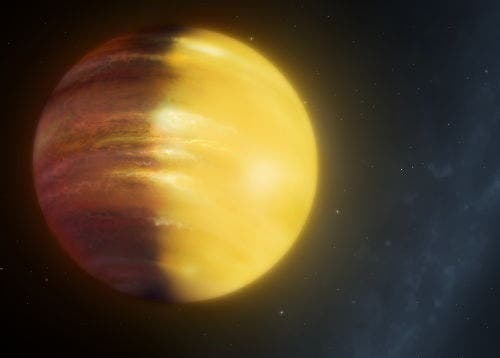Astronomers have found that the clouds on a gas giant called HAT-P-7b are made of corundum – the mineral which forms rubies and sapphires.
HAT-P-7b is larger and hotter than Jupiter. Due to proximity to its star, its temperature is estimated to be 2500 C (or 4500 F). To make things even more hellish, signs of powerful changing winds have been identified on the planet – the first time ever that weather systems have been found on a gas giant outside our solar system.
Dr. David Armstrong in Warwick’s Astrophysics Group monitored the planet, studying how light is reflected from its atmosphere. He found that the brightest point of the planet shifts its position, due to the effect of strong equatorial jets which push vast amounts of clouds around the planet. Dr Armstrong comments on the discovery:
“Using the NASA Kepler satellite we were able to study light reflected from HAT-P-7b’s atmosphere, finding that the atmosphere was changing over time. HAT-P-7b is a tidally locked planet, with the same side always facing its star. We expect clouds to form on the cold night side of the planet, but they would evaporate quickly on the hot dayside.
“These results show that strong winds circle the planet, transporting clouds from the night side to the dayside. The winds change speed dramatically, leading to huge cloud formations building up then dying away. This is the first detection of weather on a gas giant planet outside the solar system.”
A side discovery of this study was that the clouds on this planet are likely made of corundum, a crystalline form of aluminium oxide (Al2O3). Corundum is the mineral that forms rubies and sapphires and the sight of such clouds would undoubtedly be spectacular. Still a hellish planet, but a beautiful hellish planet at that.
First discovered in 2008, HAT-P-7b is 320 parsecs (over 1040 light years) away from us. It is an exoplanet 40% larger than Jupiter and 500 times more massive than the Earth – and orbits a star 50% more massive, and twice as large, as the Sun.
The paper, ‘Variability in the Atmosphere of the Hot Jupiter HAT-P-7’, is published in the first issue of Nature Astronomy.










